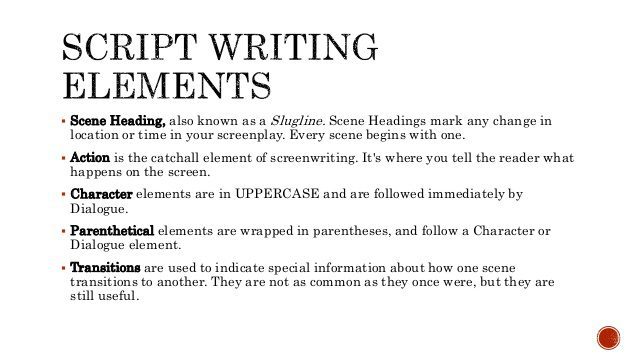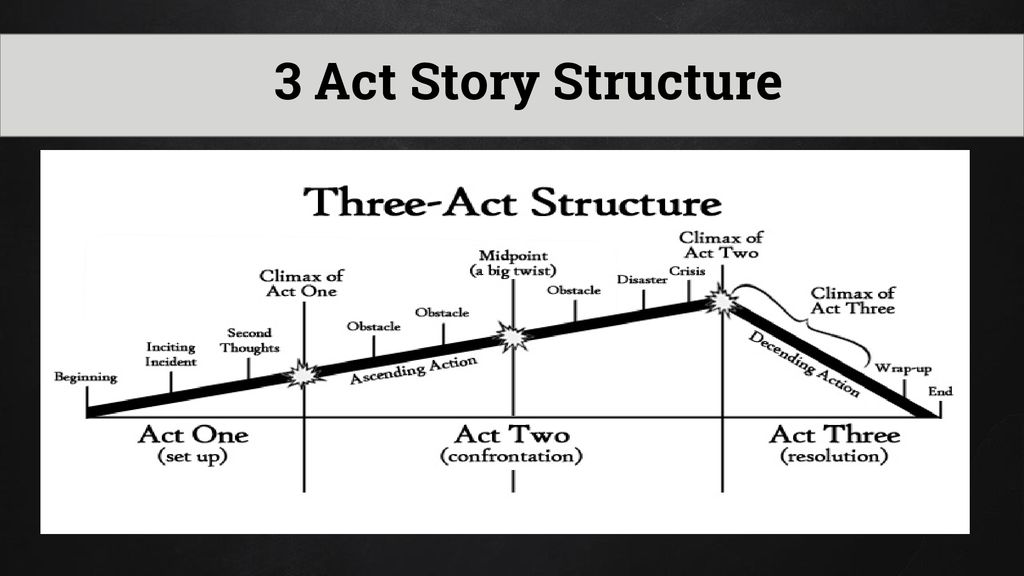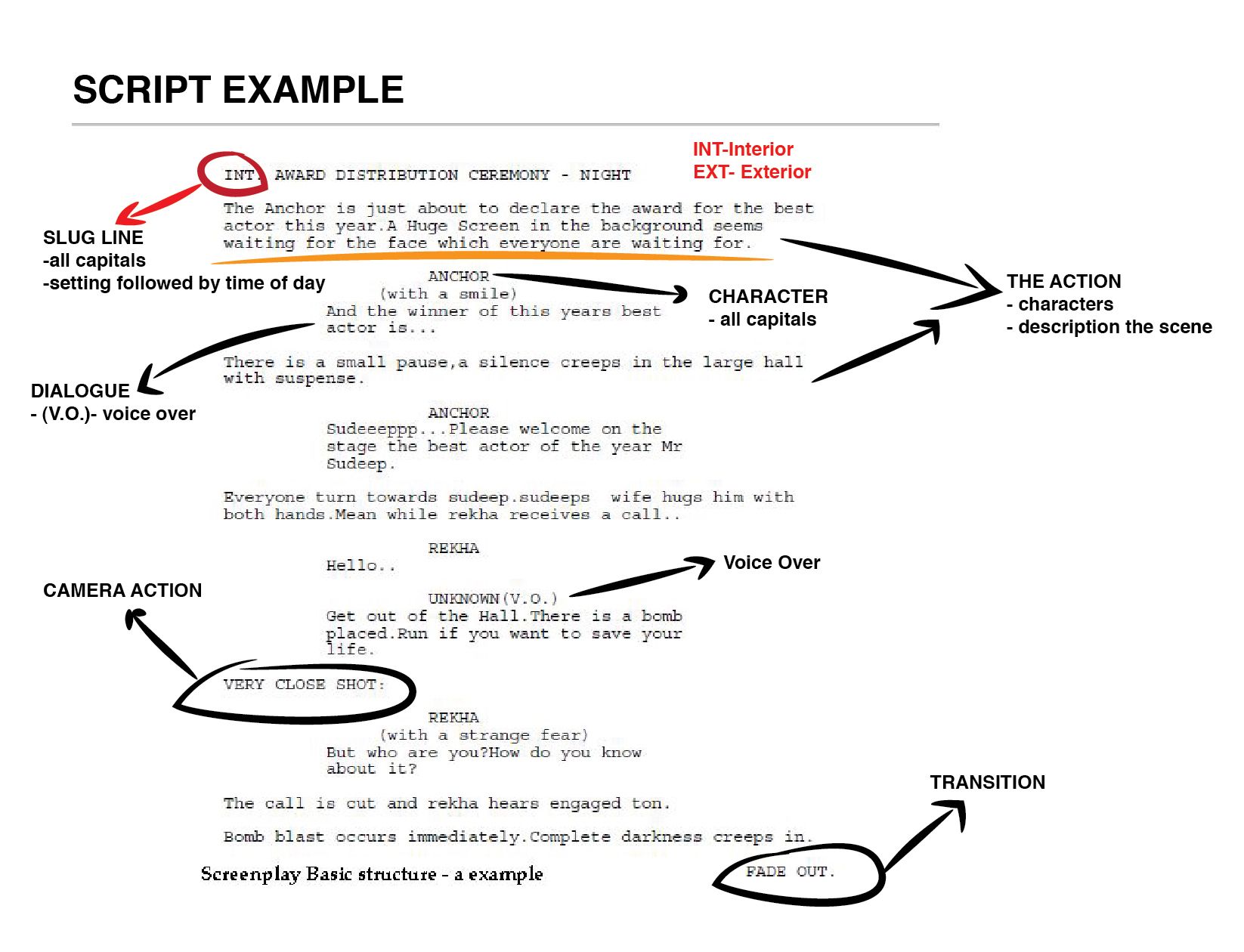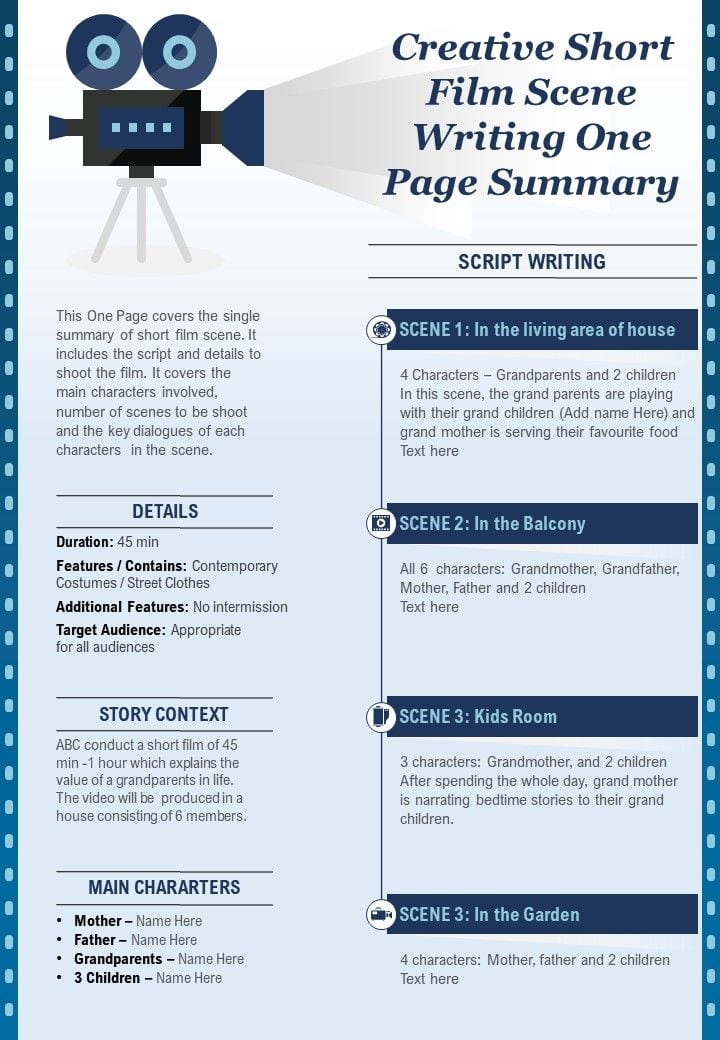How to write a good screenplay can seem like a very difficult and complicated process, especially if you’ve never written one before.
However, like any other profession, there are certain “secrets” to writing a successful screenplay that will help you write a blockbuster script that’s valuable.
It just takes some serious soul-searching to figure out what it is that you’re really passionate about when it comes to scripts. I’ll share with you one of the keys here.
HOW DO YOU WRITE A GOOD SCRIPT
What Is Script Writing?
Scriptwriting is a form of creative writing that involves the process of developing narratives for radio, television, and films.
One of the most important skills for scriptwriters to have is an understanding of how stories are told in different formats.
Scripts can range from dramatic monologues to sketches on sketch comedy shows.
Crafting a movie script is like building a world with words, where every dialogue and scene sets the stage for cinematic magic.
We’ll guide you through the essentials of screenplay writing, ensuring your script is not just read, but felt.
Understanding the structure, character arcs, and dialogue nuances is key to capturing an audience’s imagination.
We’re here to share our insights on creating a compelling narrative that grips viewers from the opening scene to the final cut.
The Importance Of A Strong Opening Scene
A gripping opening scene sets the tone for the entire movie.
It’s our chance to capture the audience’s attention and cement their interest in the story we’re about to unfold.
A well-crafted first scene can introduce the central theme, establish the setting, and provide a snapshot of the protagonist’s life.
It rouses curiosity and plants questions that viewers will want answered as they journey through the film’s narrative.
Think of the iconic opening sequence in Jaws.
The initial attack isn’t just terrifying; it lays the groundwork for the shark’s ominous presence throughout the movie.
Similarly, The Godfather starts with a compelling monologue that immerses viewers into the world of the Corleone family.
We must ensure that every element in the opening scene –
- Reinforces the genre,
- Hints at the conflict,
- Showcases the film’s tone.
Whether it’s a punchy dialogue, an enigmatic character entrance, or a montage of images, these elements work together to leave a lasting impression.
After all, the beginning is often what people remember most.
It’s our job to create an experience that sticks with the viewer.
With that goal in mind, we craft our opening scenes to be as impactful as possible.
This solid foundation paves the way for a truly memorable film.
Structure Of A Movie Script: Act I, Act Ii, Act Iii
In crafting a compelling movie script, understanding the classical three-act structure is
Act I – also known as the setup – introduces the characters, establishes the setting, and presents the story’s primary conflict.
Within Act I, we must ensure that our audience is hooked and fully engaged with the narrative.
This section is the foundation that supports everything to come, ensuring that viewers are emotionally invested right from the start.
As we transition into Act II, the longest segment of the script, our characters face various obstacles and challenges.
It’s here where the main story unfolds and the characters’ arcs become evident.
During Act II:
- The stakes are raised,
- Subplots may intertwine with the main arc,
- Characters are deepened and relationships are tested Act II should build to a climax, providing a bridge to the final act.
Act III brings resolution to the story – conflicts reach their peak and characters undergo their most significant transformations.
This act serves to conclude the story arcs and solidify the message of the film.
By respecting this structure, a script becomes more than just a story; it transforms into a blueprint for a potentially timeless cinematic experience.
Each act plays a vital role in weaving the intricate web that captures the audience’s imagination.
Developing Compelling Characters: Protagonist, Antagonist, Supporting Characters
We know the heart of any script lies in its characters.
The protagonist acts as the story’s linchpin, making their goals, obstacles, and growth
The antagonist, on the other hand, provides necessary opposition – challenging the protagonist and shaping the narrative tension that keeps viewers hooked.
Strong supporting characters serve multiple functions –
- They enrich the protagonist’s journey,
- Offer comic relief or a sounding board for the lead,
- Sometimes, they become fan favorites in their own right.
We craft characters that resonate by giving them depth and flaws, similar to what’s found in classics like The Godfather and more recent masterpieces such as Joker.
It’s the intricate shades of humanity in Michael Corleone and Arthur Fleck that render them unforgettable.
We immerse our audience through relatable emotions and choices, weaving a rich tapestry of interactions that reflect the complexity of life itself.
Each character’s backstory and motivations are carefully detailed, creating a world that feels lived-in and authentic.
In screenwriting, we can’t ignore the significance of dialogue in character development.
It’s the vehicle through which personalities shine and relationships build.
Irrespective of a character’s screen time, it’s vital they serve a purpose either through advancing the plot or revealing key aspects of other characters.
We understand the importance of crafting arcs for our characters, ensuring they undergo a transformation by the film’s end.
Whether it’s a subtle internal shift or a complete overhaul of their world view, audiences need to see this evolution to feel a sense of completion.
Balancing character complexity with plot demands can be challenging, but it’s a hurdle we must master.
This balance often determines the relatability and longevity of a film, making it critical to jump into the nuances of each character while crafting a compelling narrative.
Crafting Engaging Dialogue: Subtext, Pacing, Authenticity
Crafting dialogue for film is about striking a delicate balance.
It’s not just what characters say but also what they don’t, that drives a story forward.
Mastering subtext is the key to giving lines depth.
When characters speak, there’s often another layer of meaning beneath their words.
Pacing can make or break the tension and flow of a scene.
Quick exchanges might amp up the energy, while longer beats allow for emotional resonance.
Authenticity in dialogue anchors the audience in the film’s reality.
We ensure characters speak as real people would, reflective of their background and experiences.
Some key elements we focus on for authentic dialogue include:
- Language consistent with the character’s age, occupation, and personality,
- Jargon and expressions specific to the film’s setting,
- Natural overlaps and interruptions found in actual conversations.
Above all, dialogue serves the story.
It must always propel the plot or reveal something vital about the characters, their conflicts, or the world they inhabit.
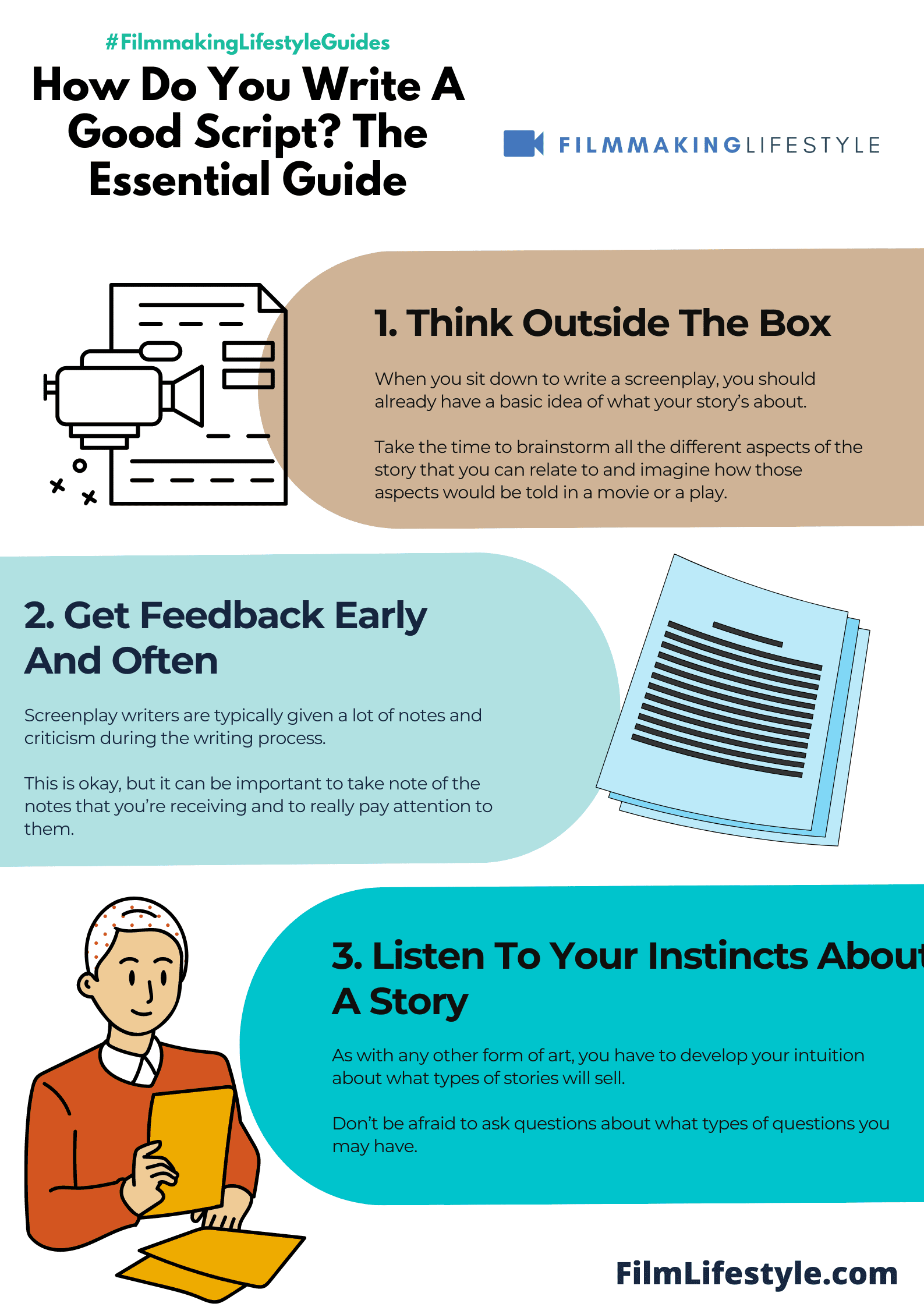
In The Godfather, we see dialogue that’s measured and meaningful.
While in Joker, the conversations reflect a fragmented psyche, mirroring the nonlinear narrative.
We craft dialogue that resonates with viewers long after the credits roll.
Words that get etched in memory remind us of the film’s emotional highs and lows.
Dialogue should echo the themes of the film.
Reinforcing the central message without being overt makes for memorable movie lines that transcend the screen.
With every script, we strive to blend subtext, pace, and authenticity.
We do so to create an engaging auditory experience that complements the visual storytelling.
The Art Of Visual Storytelling: Descriptions, Framing, Foreshadowing
When we jump into visual storytelling, the first element we consider is description.
We craft vivid scenes using concise language that guides the audience, painting pictures in their minds.
By selecting potent details, we make every scene come alive without overwhelming the viewer with superfluous information.
In the realm of framing, we manipulate the camera’s eye to focus the audience’s attention exactly where we want it.
Our choice of shot sizes, angles, and movements doesn’t just capture the action – it tells a story.
A well-framed shot can speak volumes, revealing character traits or underscoring a narrative point without a single line of dialogue.
Foreshadowing is our secret tool for building anticipation and depth.
We plant subtle hints about future events that resonate once those events unfold.
These breadcrumbs can present themselves through dialogue, props, or the setting itself.
Our audience might not catch all the signs on the first viewing, but the seeds are planted, enriching the story upon subsequent watches.
- Key components in effective visual storytelling include: – Selective detail in descriptions – Intentional framing to guide viewer focus – Subtle foreshadowing to enhance narrative depth.
As we continue to explore these elements, it becomes clear that they are interconnected.
Our descriptions set the stage, our framing highlights what’s important, and our foresharing adds layers of meaning.
It’s a delicate balance, but mastering it elevates our script from mere words on a page to a captivating blueprint for a cinematic experience.
How To Write Scripts For Movies – Wrap Up
We’ve explored the craft of scriptwriting and its pivotal role in transforming a story into a visual feast for the eyes.
Mastering the art of visual storytelling is no small feat, yet it’s essential for scripts that resonate with audiences and stand the test of time.
Remember, every detail we weave into our scripts serves as a guidepost, shaping the viewer’s journey and enriching the cinematic tapestry.
Let’s continue to hone our skills, creating scripts that not only tell a story but also paint it before our eyes.
Frequently Asked Questions
What Is Visual Storytelling In Film?
Visual storytelling in film is the art of using imagery, visuals, and on-screen elements to tell a story without solely relying on dialogue.
This can include anything from the set design, lighting, and colors to camera angles and actor movements.
Why Is Selective Detail Important In Descriptions?
Selective detail in descriptions is important because it allows filmmakers to focus the audience’s attention on key elements that drive the story forward, creating a rich and engaging narrative experience without overwhelming the viewer with too much information.
How Does Intentional Framing Guide Viewer Focus?
Intentional framing guides viewer focus by composing the shot in a way that highlights the elements most important to the story at that moment.
The way a scene is framed can direct the audience’s attention to specific details, characters, or actions that are crucial to the narrative.
What Role Does Subtle Foreshadowing Play In A Film?
Subtle foreshadowing plays a critical role in adding narrative depth and creating anticipation.
It involves planting hints or clues early in the story that reference events that will happen later, thereby enriching the storytelling experience and keeping the audience engaged.
Can A Script Be Considered Effective Without Good Visual Storytelling?
While a script is the blueprint for a story, it may not fully engage the audience without good visual storytelling.
Effective visual storytelling transforms words on a page into a captivating cinematic experience, thus elevating the impact of the script.

